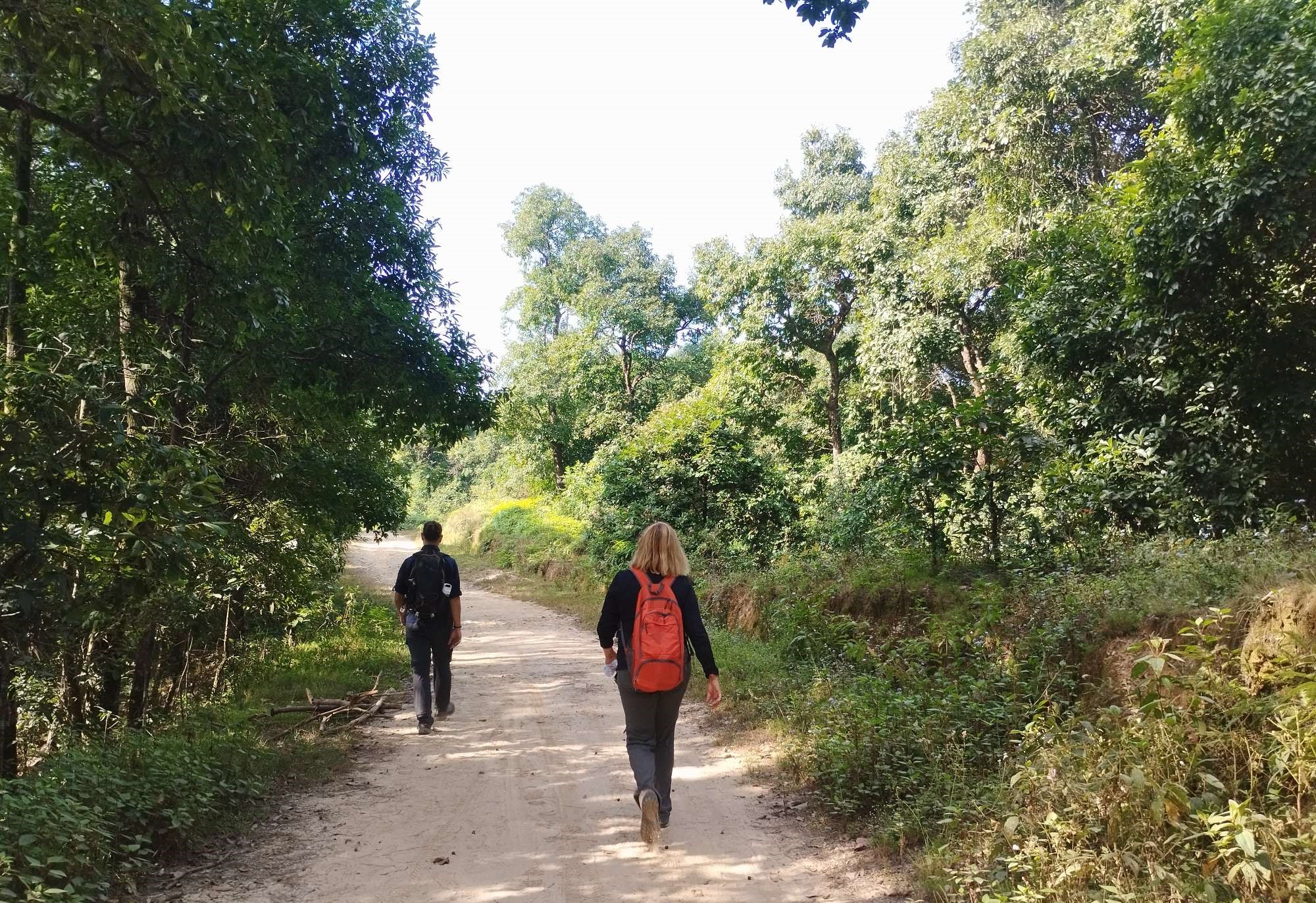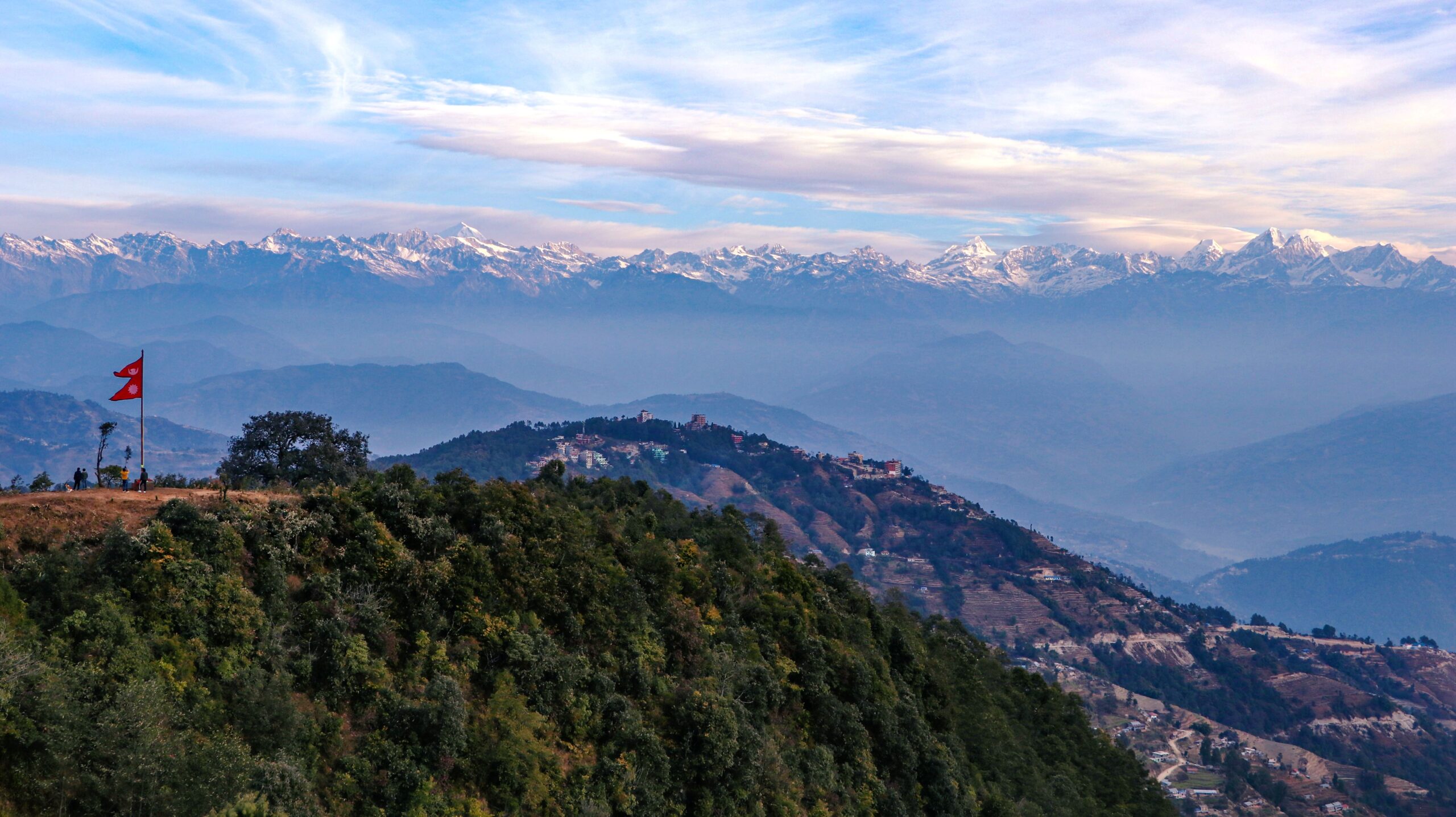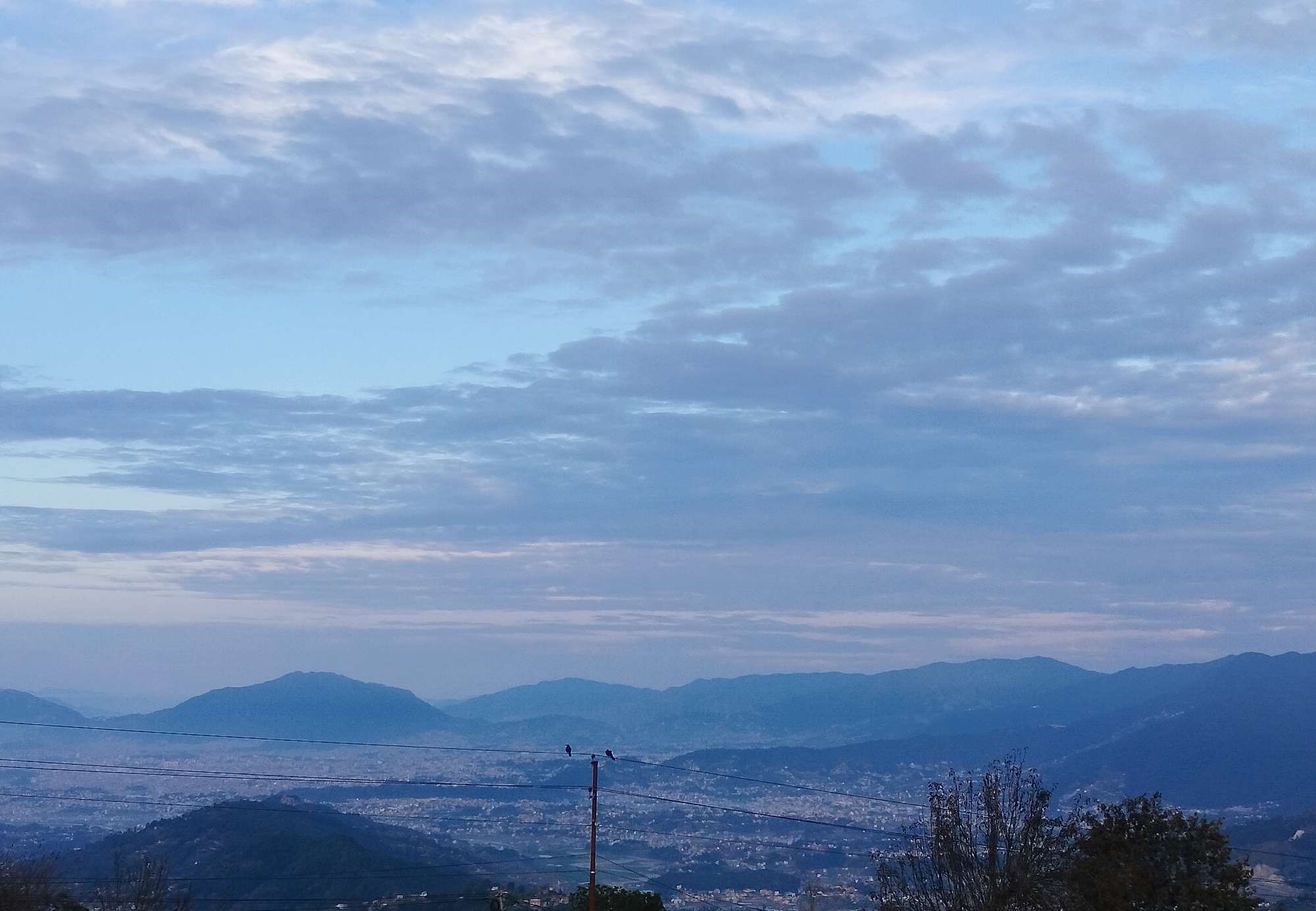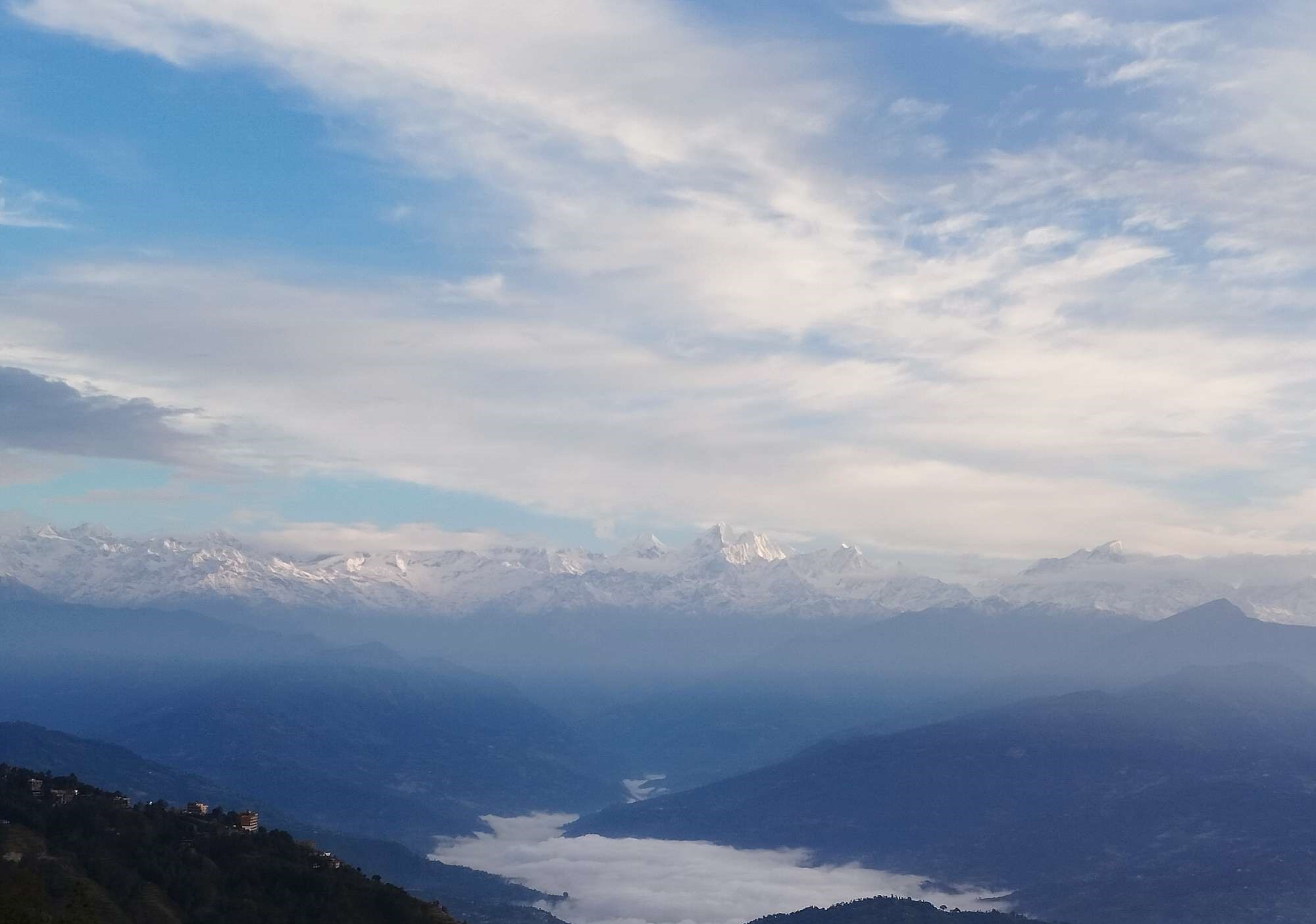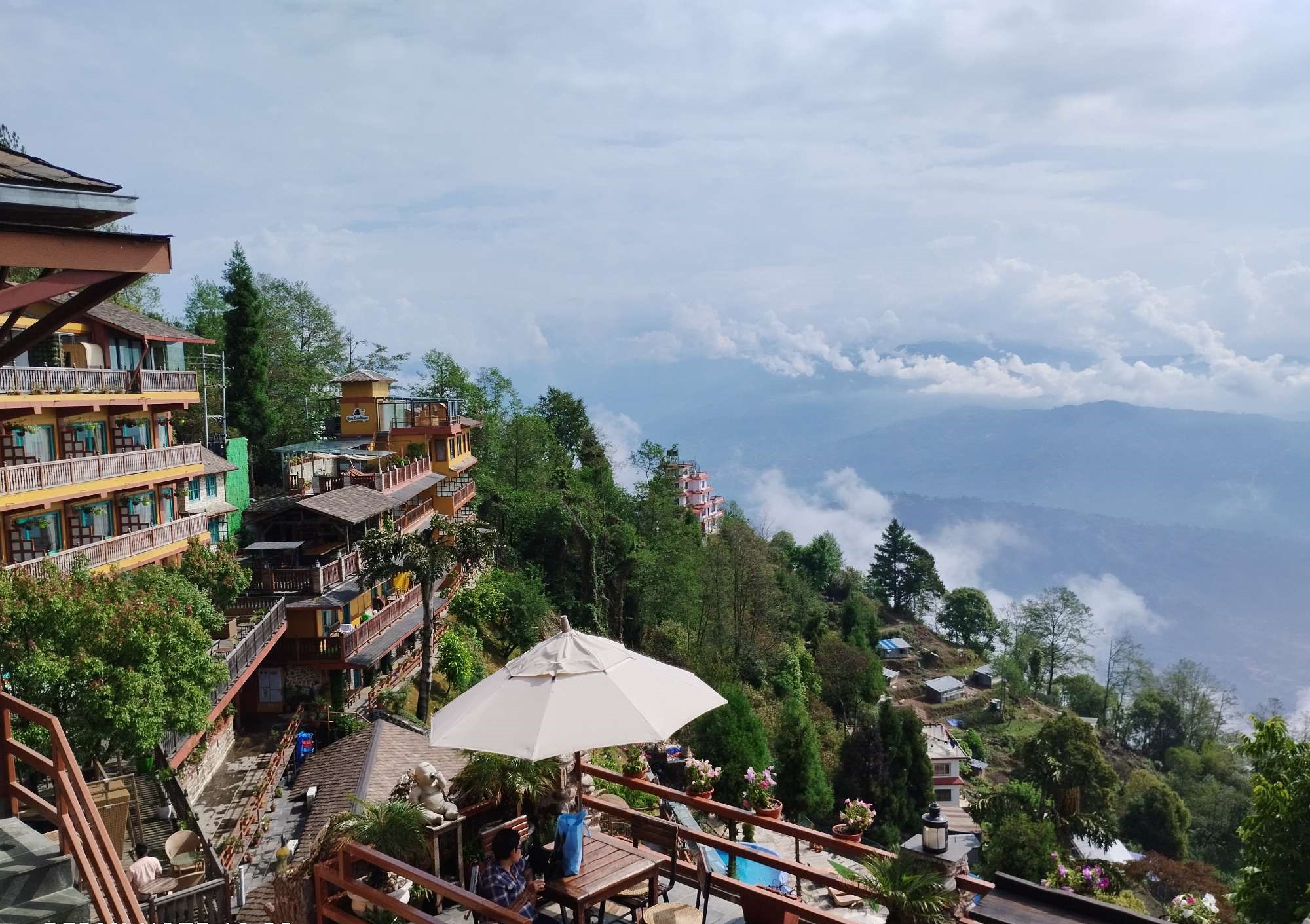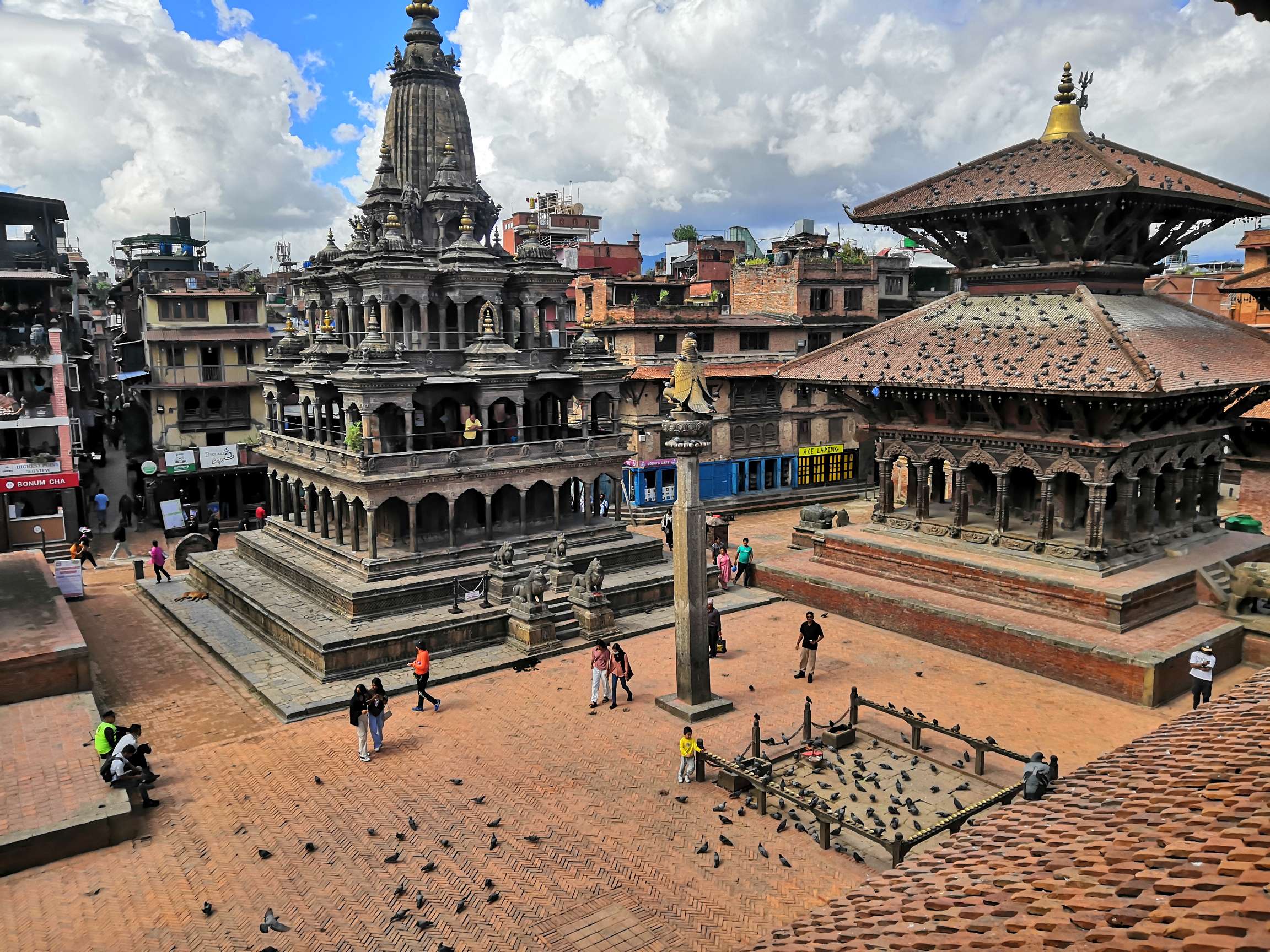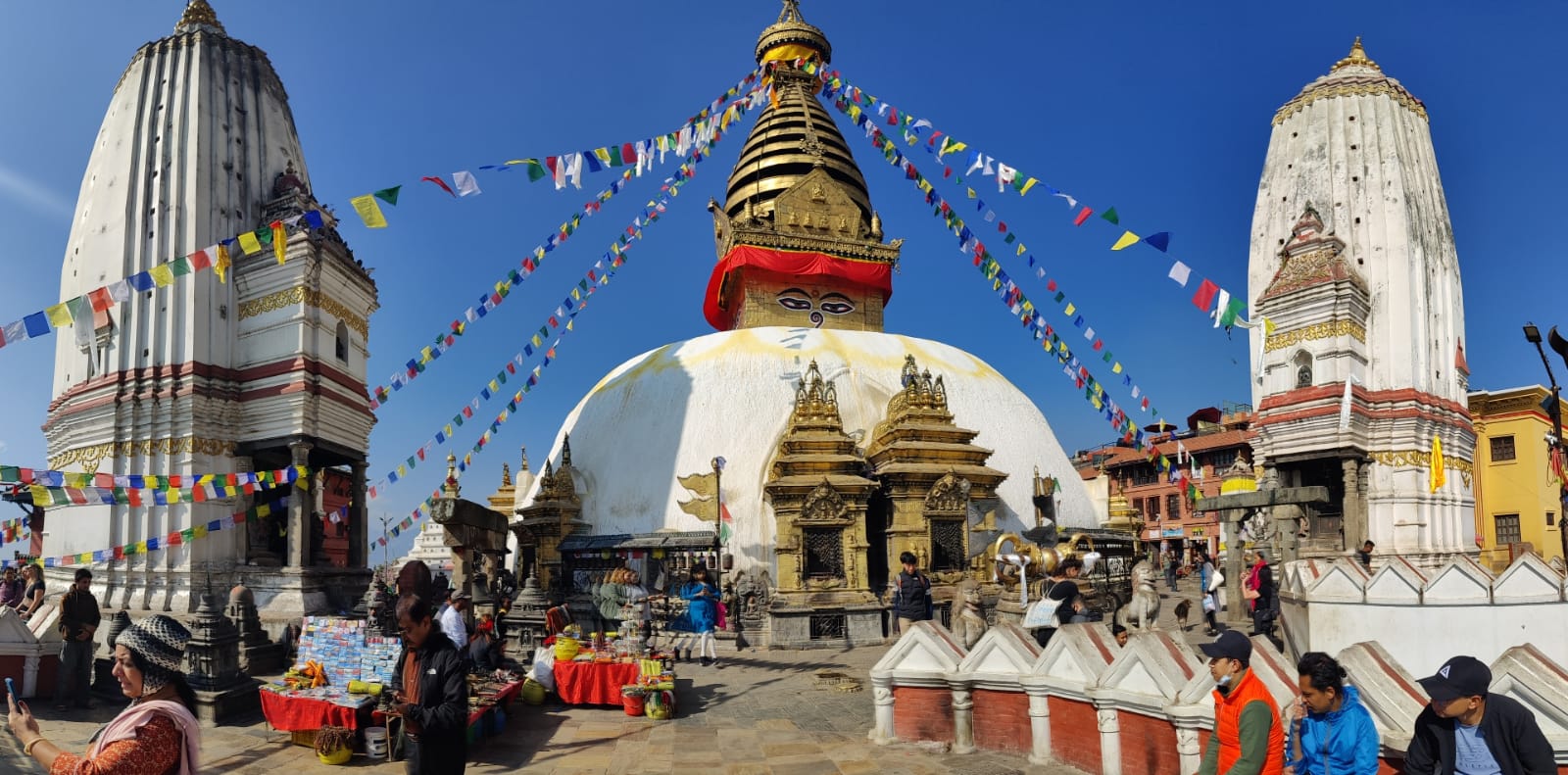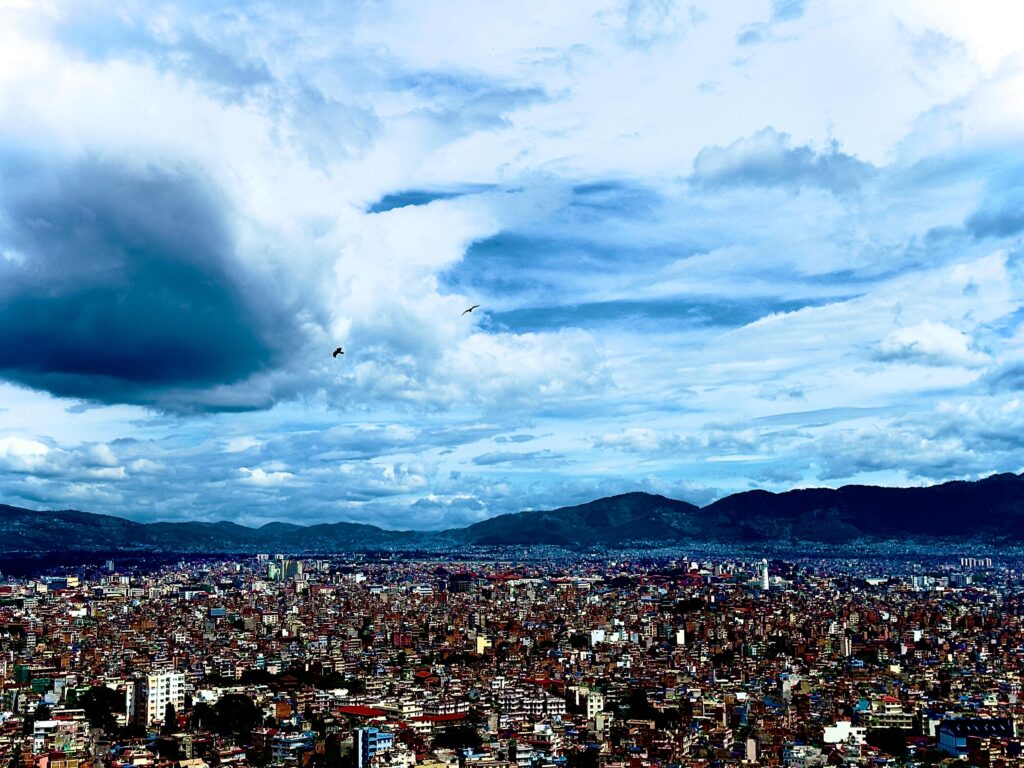Visit UNESCO World Heritage Sites of Kathmandu & Patan.
Kathmandu guided city tour includes four major UNESCO world heritage sites in Kathmandu valley, major civilizational attractions. These four sites give you wonderful insights to various aspects of different religious/spiritual/historical segments of Nepalese society in both past and present. Swoyambhunath tells you the story of how present day Kathmandu valley, then Nag Daha (Snake Lake), was converted in to wonderful place of human settlement from Himalayan Buddhist’s perspective. Patan Durbar square is a reflection of magnificent arts and architecture that existed in and around the valley in the recent and distant past. Pashupatinath temple narrates you the tale of Sanatan dharma (understood as present day Hinduism) in Kathmandu valley as to how it originated and evolved throughout various time periods. It also illustrates how this site is profoundly linked to all Hindus worldwide. Bouddha Stupa represents another facet of Himalayan Buddhism and its evolution throughout the history and also gives you a clear picture of how Tibet and Nepal are deeply connected through this site.
Swoyambhunath
holiest Buddhist stupas in Nepal
- World Heritage Sites
- Literally meaning "self- created"
- Praised and meditated by many Buddhas: Shikhi, krakuchhand, kanakmuni, Shakyamuni, Manjushri
- Excellent view of the Kathmandu valley
The distance is about 3.9km from Thamel takes around 15min in private vehicles. Swayambhu has been listed in the World Heritage Sites. The entire valley was an enormous lake, nagdah, out of which grew a lotus with five colored flame (self-arisen). Lotus was transformed into a hill and the flower became the stupa. It is still believed that the self-arisen flame is covered with dome of Stupa. The place is known as Swayambhu, meaning "Self-Created" over which a stupa was later built. Swayambhu is among the oldest religious sites in Nepal known as 'monkey temple' because of the large tribe of roaming monkeys. Located at one of the highest elevations in Kathmandu Valley gives panoramic views of the city. The place is praised by Buddha and meditated by several Buddha's as a pure holy site. We'll see three enormous shining golden statues of Sakyamuni Buddha, a four-armed Chenresig and Guru Rinpoche, built-in 2003. The site has two access points: a long staircase contains 365 steps leading directly to the main platform of the temple and vehicle road around the hill from the south leading to the south-west entrance. The first sight on reaching the top of the stairway is the enormous Vajra.
The first earthly element facing the stupa on left is a small building contains one of the five elements placed in cardinal points around Swayambhunath. There are many small shrines with statues of Tantric and shamanistic deities, prayer wheels for the Tibetan Buddhists. The stupa represents Buddha’s mind. It offers peace, freedom, and joy and ultimately helps to obtain perfect enlightenment. Huge prayer wheels and fine Buddhist paintings are displayed in the monasteries, as well as the largest Buddha statue in the country. The stupa consists of a dome at the base; above the dome, there is a cubic structure with the eyes of Buddha looking out over the valley. The stupa has stood as a hallmark of faith and harmony for centuries with Hindu temples and deities incorporated in this Buddhist site. Visitors walk around the stupa and recite mantras, make offerings, turn prayer-wheels and make wishes for the benefit of all beings. Near the stupa left at the corner is a small red brick building has Swayambhu Buddhist museum. There is a collection of Buddhist statues and items. Hariti Temple (Ajima Temple) is a two-tiered gilded Newari style temple. Harati is the Buddhist goddess for the protection of children against infectious diseases, protectress deity of Swayambhu, and the deity of wealth.
Patan Durbar Square
City of fine arts.Golden Temple, Mahabuddha
It is one of the three medieval cities in Kathmandu and a destination of fine arts has hundreds of fascinating Hindu and Buddhist monuments scattered in and around. Patan City is an enchanting mixture of palace buildings, artistic courtyards, and former palace complex. Most of the monuments are back to the medieval Malla period 15th to 17th century as the golden period of Nepalese art and architecture. Krishna Mandir- a stone temple of Lord Krishna with its 21 spires and bas-relief art depicting scenes from the Mahabharata and Ramayana epics. In addition to this, the main highlights are the Golden temple, Rudravarna Mahabihar and Patan mahabuddha, an exemplary Buddhist monumental sites in Patan. The background, story and history of these sites will amaze you while witnessing a living history. The stories behind the development of different segment in Buddhism, Bajrayan, which is a typical Newari Buddhist practice in Kathmandu valley. Patan is also the center of wooden and metal artifacts.
Pashupatinath Temple
- Most sacred Hindu temple
- Famous for the shrine of lord shiva
- Two-storied pagoda temple
Pashupatinath Temple is one of the most sacred Hindu temples of Nepal located at the banks of holy Bagmati River. Every year this temple attracts hundreds of elderly followers of Hinduism. The place for different festival like Maha Shivaratri and Teej where thousands of devotees celebrate. The temple is the ultimate pilgrimage for Hindus throughout the world. The area is swarmed in by the Hindus from different part of the country. The two-storied pagoda temple of Pashupathinath houses the five-faced statue of Lord Shiva. Apart from the main shrine, there are numerous temples dedicated to different god and goddess in and around the Pashupatinath temple area. This temple is an important destination for art historians. It displays a variety of temple design some of which are Dome style, Pagoda style, Shikhara style and so on. Additionally, there are varieties of statues and sculptures around the complex. There are statues made of stone, metal, and wood. The door and pillars around the temple area are carved in beautiful shapes of God and griffins. The temple is built in the pagoda style of architecture, with cubic constructions and carved wooden rafters on which they rest, and two-level roofs made of copper and gold. After we continue to Boudhanath Stupa which is 2.3km from here takes around 15min to reach.
Boudha Stupa
The largest stupa in the world
- Most sacred Tibetan Buddhist site
- The ancient trade route from Tibet
- The woman built the stupa and was completed by her four sons
- Stupa contains a relic of Kashyap Buddha
On the rooftop restaurant and enjoy the calm and peaceful ambience with a cup of coffee. Boudha stupa is the largest and most sacred Tibetan Buddhist site outside of Tibet forming a religion and culture hub for the Tibetan and people from the Himalayas of Nepal. The Stupa was on the ancient trade route from Tibet. The Stupa is claimed to have the relic of Kasyapa Buddha, the third Buddha of the Bhadrakalpa. Boudha Stupa, a UNESCO World Heritage Site significant for its historic and architectural significance, with sprouting monasteries and craftsmanship. It is said that the stupa is built by the mother Jyajhima, a poultry woman. She was very poor despite her poverty she had an intense desire for building a stupa. The mother passed away after she completed up to the vase, the dome-like structure. She had four sons, and the construction of the rest of the Stupa was completed by four sons. After they finished it, they all stood up in front of it and made prayers. Everyone made their wishes. When they were praying, all the buddhas and bodhisattvas were absorbed into the stupa, which is why the name of the stupa is also “All-Encompassing.” The stupa is a semicircular white dome and the towering spire, with unblinking eyes painted on each side that stares into the four directions. The overall shape represents a Buddhist mandala (a cosmological map) and the path towards enlightenment, as well as the mythical center of the cosmos, Mount Meru. The four Dhyani Buddha signifies the crucial points, and the fifth, Vairocana is enshrined in the central white hemisphere of the stupa. The base of the stupa consists of three large platforms, decreasing in size. The square tower is topped by a pyramid with 13 steps, represents the stages that human beings must pass through to achieve nirvana. The triangular shape is the abstract for the elements of fire. Every portion has a symbolic significance: the base, dome, spire, and pinnacle represent the five elements. It is said that the stupa contains a piece of bone from the skeleton of Siddhartha Gautama, the historical Buddha. There are 108 images of Dhyani Buddha at the base of the stupa, accompanied by prayer wheels organized in a group of four or five in 147 different niches. The prayer flags tied on the stupa are believed to carry mantras and prayers towards heaven. The place is quiet and peaceful to find some spiritual connection with this place. Moreover, the sound of singing bowls and Buddhist chants, mixed with the smell of incense burning creates a kind of healing energy. The place allows visitors to delve into the lives of Buddhist monks and nuns who devote their lives to simplicity and non-violence. Boudhanath is the best place to learn about spirituality, meditation and the history of Buddhist philosophy, there is no other place like Boudhanath to visit. Early in the morning and evening time, Buddhist monks in maroon robes are seen circumambulating the stupa with prayer wheels on their hands. Small peripheral of the stupa is surrounded by the Thanka and rituals objects shop. The spot is favorable to explore both the culture and architectural sites. Numerous small stupas are located at the base.

